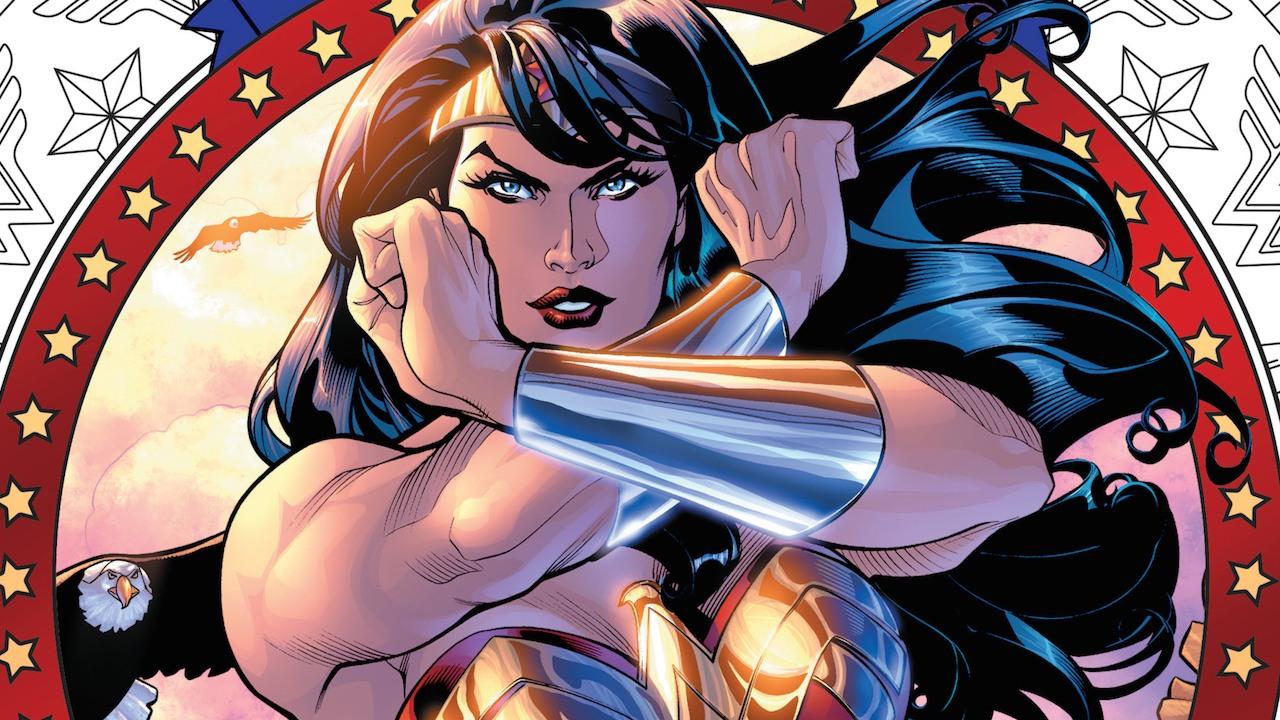The History of DC Comics Wonder Woman: Her Character and Creation

1941 was truly the year that changed everything. Don’t get me wrong, both 1938 and 1939 were incredibly important years but 1941…1941 turned the industry upside down.
Of course, 1938 marked the first appearance of Superman and 1939 Batman but neither solved, or at the bare minimum, laid the groundwork to solving a problem that plagued comic books for years. Where were the female superheroes? They had to have existed, right? It’s not possible for an entire industry to be built around a segment of the market that accounts for only 50% of the population, is it?
Although it was far from perfect, that’s exactly what happened.
Superhero comics were made for men, by men. Their heroes had big muscles, were incredibly strong, could do unbelievable things, and wore outfits that accentuated all the above. They stopped villains, robberies, became rallying points for all that is good in the world, and always saved the girl.
The girl.
Therein lies the problem. They always saved the girl.
The damsel in distress. The woman who
1941 changed all that.
William Moulton Marston
William Moulton Marston, the psychologist who secretly had one wife, a mistress, and children with both, published the first mainstream female superhero, Wonder Woman. Understand, however, that Wonder Woman of then bears little resemblance to how we know her today.
In 1941, the DC Comics Wonder Woman book was littered with sexual images and situations, and all forms of bondage. She was tied to a chair, spanked, tormented, and tortured. Wonder Woman was meant to be a symbol of liberation for women and their freedom from men. In fact, one of her weaknesses saw her lose her power
But that’s how she was.
Marston said this when asked about the imagery and how the reader would react, “the reader’s wish is to save the girl, not to see her suffer”. Of course, men at the time would want to save the girl. They spent the last many years watching men save the girl. They were programmed to save the girl
Marston created Wonder Woman was a metaphor for two things. First, how women were perceived by men and second, how they needed to break free of those perceptions. Think about earlier and how she’d lose her power if chained by a man. The only way for Wonder Woman to gain her strength back, thereby her independence, was to break free of the shackles that men have put her in.
Wonder Woman was made to be a pillar of strength, independence, and freedom. She invoked confidence, power, and determination. Unfortunately, while being each of those, she was also easily manipulated by men. I hope you can see how oxymoronic this is?
As strong as they want her to be
DC Comics Wonder Woman character was at the mercy of those who drew her. Her curves were exaggerated, her beauty was right out of a photoshopped advertisement, and her costume was made to appeal to not those whom she fought for, but for those who she fought against. As much as she was a symbol of equality, she fell to the fantasies of those who drew and wrote her.
Even Marston has said that her appearance was inspired by the Varga Girl centerfolds in Esquire magazine. When creating her, he modeled her to have an interesting sense of exoticism mixed with sophistication. It was important to Marston that she invoked a sexy outward appeal to counteract the uber-masculine look of her male counterparts.
And why?
DC comics had come under fire for the overt violence their books displayed. Marston was hired by DC as a consultant to the company. His role was to help figure out a way to help curb the negativity they were receiving. After very little time, he came up with a very simple answer. Create a book centralized around love.
Enter Wonder Woman #1
The book was about an Amazonian Princess sent into the world to rid it of evil. Although the cover showed this, it did it in a less than
All kidding aside, Marston’s intention was to give the world a female superhero. He knew and understood their place in the world. “And the two wishes behind Superman are certainly the soundest of all; they are, in fact, our national aspirations of the moment—to develop unbeatable national might, and to use this great power, when we get it, to protect innocent, peace-loving people from destructive, ruthless evil.” However, as good of intentions as he had, it took years for Wonder Woman to transform from a mechanism of male fantasy into a superhero.
And the fact that she wasn’t seen as equal to her male counterparts, didn’t help. Remember, at this time she wasn’t even a member of the Justice League. The Justice League! A group of the world’s best superheroes united to bring, well, justice to the world.
Thankfully, that was about to change.
Justice Society
In 1942, a one-page questionnaire was published in All-Star Comics asking whether or not she should be included in the Justice Society. From the 1801 initial responses, the answer was overwhelming.
1265 boys and 333 girls gave an emphatic yes. 88.72% of voters wanted her in. Although this was a massive step in the right direction, things didn’t go as planned. Upon her inception, Wonder Woman was made the secretary of the group and wished the men well as they went off to war.
DC Comics Wonder Woman was not created to be a radical new hero. Comics would get enough of those in the coming years. Wonder Woman was created as a play for equality amongst men and women. She was a hand-drawn map for what needed to happen. She was a symbol of feminism in a world that wasn’t ready for it. What I am saying is that Wonder Woman was the change that the world so desperately needed. Unfortunately, in an industry filled with male artists and storytellers, it didn’t come easy.
Robert Kanigher
After Marston died in 1947, writing duties for the Wonder Woman comic fell to Robert Kanigher. Kanigher immediately changed the character. Understand that at this point in history the world was fresh off the Second World War. As such, he translated real-world happenings to the pages of his books. Along with all the other women who served in the war, Wonder Woman was told that her labor threatened the American way.
Threatened the American way.
Therefore, instead of writing her as the hero she was, Kanigher turned her into a movie star, a fashion model, and worst of all, a babysitter. But it didn’t end there. Kanigher also wrote her as hopelessly devoted to Steve Trevor and dropped the “Wonder Women of History” centerfold in every issue. Yes, the same “Wonder Women of History” feature that showcased some of the best women
As the years changed, so too did the Wonder Woman comic.
Equal Rights
The 1970s ushered in an age that was long overdue. In March of 1972, the Equal Rights Amendment was passed by the United States Congress. In June of the same year, Congress also passed Title IX. This made certain that, “No person in the United States shall, on the basis of sex, be excluded from participation in, be denied the benefits of, or be subjected to discrimination under any education program or activity receiving federal financial assistance.” As Bob Dylan famously wrote, “Times, They Are
Or was it?
The Amendment never became law.
Although the Amendment failed to become law, the Wonder Woman comic had begun to change. Not only had she had adopted her dual identities, Diana Prince and Wonder Woman, but she had also begun appearing more like the way we know her today. She had muscle tone, a fierceness in her eyes, and was developing a rabid fan base. Her change was partly due to the very successful, Lynda Carter-led Wonder Woman television series.
Lynda Carter
The show helped shape exactly what Wonder Woman is. This Wonder Woman laughed in the face of fear, stopped bullets with her bracelets, and caught evildoers without the help of men. The show did so much for the character that even today Carter is still recognized. “If I’m in the airport, people will come up and just hug me because they feel like they can…They just want to hug because some place, some memory in their lives, I meant something to them.”
Lynda Carter has become so synonymous with Wonder Woman that Wonder Woman might as well change her name to Lynda Carter. After decades of oppression, Wonder Woman was finally transforming into the independent woman William Moulton Marston set out to give the world. After multiple hit and miss themes, the 1970s began giving her the attributes she was born to have.
- Strength
- Independence
- Power
- Intelligence
- Self Respect
- Fearlessness
- Intensity
The road to this point was long and arduous. But it was worth it. The many decades that followed the 1970’s continued to build upon her now strong foundation. Although it was long overdue, Wonder Woman had ascended the same mountain that her fellow Justice League members ascended.
Multiple roadblocks
The history of the Wonder Woman comic is long and filled with more roadblocks than nearly any other superhero. For decades, we’ve watched Superman fly high above Metropolis and Batman lurk on the dark streets of Gotham. It’s what they’re known for. During that same time, Wonder Woman was given multiple identities.
- Secretary
- Love interest
- Model
- Babysitter
- Kung Fu Fighter
- Movie Star
- Princess
- Amazon Warrior
It took over 30 years of publication for the writers to begin to get it right and to this day, there’s always room for improvement. DC Comics Wonder Woman is the most important female superhero ever created. She’s given hope to millions and is one of the only easily named Superheroes in existence. And I say this knowing that the volume of superhero movies hitting the big screen only makes them more accessible.
Although her journey has been difficult, it’s been well worth it.
Cheers,
Joel

